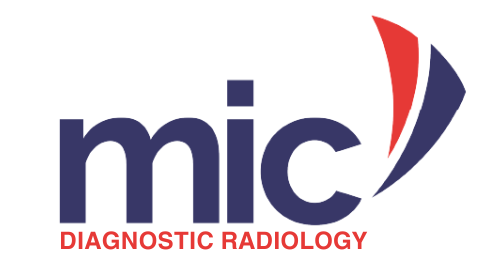MRI Scans
Magnetic Resonance Imaging (MRI) uses strong magnetic fields to obtain images of any part of the body but is especially useful in imaging the head, neck and spine (neuroradiology) and also bones, soft tissues and joints (musculoskeletal radiology). MR imaging also provides important information for staging of certain cancers, particularly those within the pelvis and breast, as well as investigation of certain heart conditions.
Some of the most common MRI examinations we perform are:
MR of the brain, and orbits for the investigation of neurological symptoms.
MRI of the spine
MRI of the knees and shoulders for investigation of symptoms.
MRI of the pelvis
MRCP for investigation of jaundice and other conditions affecting the liver and biliary system.
MR angiography to examine the blood vessels in a particular area
CT Scans
A CT scan uses X-rays to obtain images of any part of the body. The images are then reconstructed by computer software into slices that can be examined individually by our radiologists to diagnose a wide variety of diseases or injuries. CT has many uses, but it’s particularly well-suited to quickly examine people who may have internal injuries from car accidents or other types of trauma.
Some of the most common CT examinations we perform are:
CT Brain and Brain Perfusion for suspected stroke
CT Chest, Abdomen and Pelvis for cancer staging (referred by oncologists) or investigation of acute abdominal pain
CT Angiography for suspected pulmonary embolism
Cardiac CT for suspected coronary heart disease
CT Colonography for colon cancer screening
CT Paranasal sinuses referred by Ear, Nose and Throat surgeons
CT of the Urinary Tract to investigate for kidney stones
Cardiac Studies
At MIC, we use the term Cardiac Studies to describe all of the medical imaging procedures we offer to help doctors to assess your heart health. Your doctor may order one of these tests to:
Look for early signs of a heart condition or heart disease
Assess the effects of a heart attack
Find the cause of chest pain
Examine the structure and function of the heart and heart valves
Detect coronary artery disease
MIC offers a range of cardiac medical imaging procedures including :
Cardiac Coronary Artery Calcification Score
Cardiac CT Coronary Angiography
Echocardiogram
These help identify warning signs and can be used together to give doctors and patients a complete picture of the heart and arteries. This information is a vital part of preventing heart disease, reducing risk factors and managing conditions before they become life-threatening.
Ultrasounds
An Ultrasound Scan uses safe high-frequency sound waves to create an image of the inside of the body. An Ultrasound probe or transducer generates the sound waves.
Ultrasound can be used for monitoring the progress of an unborn baby, examining organs, muscle tendons and ligaments around joints as well as blood flow within your blood vessels. An ultrasound scan is non-invasive and generally painless process that does not use radiation.
Digital X-Rays
X-Rays are still images (similar to photographs) that allow our radiologists to see through the skin at the underlying bones and soft tissues for signs of any abnormality. They are used for much more than identifying injuries from accidents. They are used to screen for, diagnose, and treat various medical conditions. X-rays can be used on just about any part of the body—from the head down to the toes—to identify health problems ranging from a broken bone to pneumonia, heart disease, intestinal blockages, and kidney stones.
X-rays use small doses of ionizing radiation. The beams pass through your body, and they are absorbed in different amounts depending on the density of the material they pass through. Dense materials, such as bone and metal, show up as white on X-rays. The air in your lungs shows up as black. Fat and muscle appear as shades
Fluoroscopy
Fluoroscopy is a study of moving body structures–similar to an X-ray “movie.” A continuous X-ray beam is passed through the body part being examined. The beam is transmitted to a TV-like monitor so that the body part and its motion can be seen in detail. Fluoroscopy helps physicians to look at many body systems, including the skeletal, digestive, urinary, respiratory, vascular and reproductive systems.
Fluoroscopy is used in many types of examinations and procedures, such as barium X-rays, lumbar puncture, placement of intravenous (IV) catheters (hollow tubes inserted into veins or arteries), intravenous pyelogram, hysterosalpingogram, MCUGs, IVUs and biopsies. A Fluoroscopy examination of the oesophagus can pinpoint the exact position of a narrowing in your throat if there is one, and show the extent of the narrowing.
Gastrointestinal Imaging
Gastrointestinal (GI) imaging is an examination of the oesophagus, stomach and the small intestine. Images are produced using a special form of x-ray called fluoroscopy which shows contrast movement through body structures.
During the exam, you will be given a contrast material such as liquid barium to drink. The radiologist will watch as the barium passes through your digestive tract on a fluoroscope, a device that projects radiographic images in a movie-like sequence onto a monitor.
Once the region of concern in the GI tract is adequately coated with the barium, the radiologist will be able to view and assess your oesophagus, stomach and duodenum. Still x-ray images will be taken and stored for further review.
Your practitioner may order upper GI imaging to help evaluate your digestive system, particularly if you are having symptoms such as reflux, unexplained vomiting, or severe indigestion. The test can also find abnormalities such as ulcers, tumours, hernias, blockages or inflammation.
Prostate Biopsy
A prostate biopsy is a preventative measure to check a patient for prostate cancer. Often, your doctor could recommend a biopsy if a lump or any abnormality is indicated during a rectal exam, or if a blood test’s results include abnormally high prostate specific antigen (PSA) levels.
The biopsy process will take place to gather tiny tissue samples which will then be examined for signs of prostate cancer.
A patient will lie on their side with knees bent, after which their healthcare provider will clean and apply gel before a small probe is inserted into the rectum. An ultrasound will provide images of the prostate, indicating which areas will need to be numbed before the biopsy needle is inserted to gather tissue samples.
Following the procedure, your doctor might describe an antibiotic. Symptoms following a prostate biopsy could include slight discomfort or light rectal bleeding.
Interested in our services?


